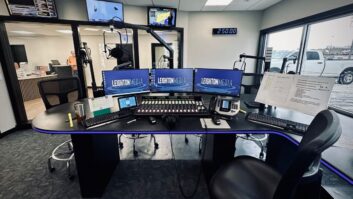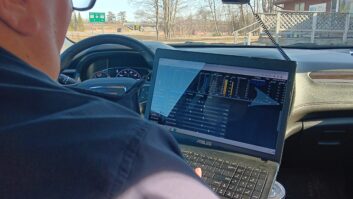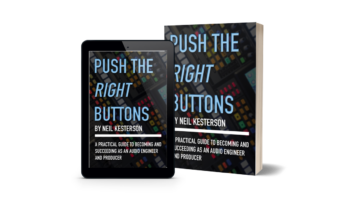WASHINGTON Broadcast equipment manufacturers say audio logging equipment could soon replace audio delay units as the fastest-selling type of studio gear, now that the FCC is seeking to bolster indecency enforcement efforts by proposing to require broadcasters to log audio and save it for a recommended 60 to 90 days.
Gone are the archaic Telex analog reel-to-reel recorders and similar devices better suited for industrial applications and which required walls and walls of tape storage. Broadcasters now choose from low-priced software programs that run on a PC to pricier turnkey logging systems.
Engineers and managers should face no shortage of audio logging options when and if the FCC proceeds with the requirement.
Equipment manufacturers say an inexpensive Windows-based solution may cost a broadcaster around $500, while high-end logging gear can start at $10,000.
In a Notice of Proposed Rulemaking in July, the FCC outlined its proposal to increase the effectiveness of its process for enforcing restrictions on obscene, indecent and profane broadcast programming.
The filing deadline for reply comments for MB Docket 04-232 was to end Aug. 30, and commission staff expected to review that public input.
‘Barely audible’
When the FCC announced the proposal, broadcasters immediately began asking manufacturers and suppliers about the availability of logging equipment.
“There has been an uptick in the number of calls we’ve received,” said Denny Sanders, managing director for Telos Systems. “People are checking to see what they need for hardware.”
Sanders said the early reel-to-reel recorders used by broadcasters had primitive fidelity. “Barely audible, is what I recall. They were built for the public safety sector, and storage of the tapes was a major problem. It just wasn’t very practical,” Sanders said.
Most logging products today also can be used for air checking, remote listening and verification that commercials ran as scheduled, Sanders said.
Sanders’ company is active in this market, offering the Telos ProFiler automated programming archive. It uses MP3 compression, starts at a tad under $600 and can run on most PCs with Windows 2000 or XP Professional, according to the company.
“This can run well on older Pentium 3 computers with 400 MB RAM. So any old desktop sales computer should work,” Sanders said.
U.S. Sales Manager Kirk Harnack said ProFiler records direct to hard drive and, depending on the bit rate setting, can hold up to a month of good audio on a 30 GB hard drive. ProFiler comes with a custom stereo sound card using “off-the-shelf drivers with balanced input and output.”
ProFiler can be used as an audio logger or aircheck skimmer; it time-stamps audio in 15-minute blocks, Harnack said.
“A PC can hold up to four ProFiler audio cards, giving broadcasters the capability to record four stereo streams or eight mono streams for cluster applications,” Harnack said.
Once a hard drive is filled, ProFiler can dump the oldest audio to a FTP site or other local area network, he said.
Another supplier in this niche is Sonifex Ltd., which sells the Net-Log audio logger, listing for slightly more than $5,400. The Net-Log includes a dedicated hardware recording platform capable of recording four mono channels or two stereo audio streams, which are then encoded MP2, said Marcus Brooke, managing director.
Dedicated hardware, software
“The unit was designed as dedicated hardware for reliability reasons. In fact, there is not a motherboard in this machine. Although PCs are great for playing back audio, they generally are not robust enough for continuous recording,” Brooke said.
Sonifex’s Net-Log records to a large internal hard disk while playback is carried out by streaming the audio across a network onto one or more PCs, Brooke said.
Software developer LakeSoft Inc. touts its eSkimmer appliance as a “hardware turnkey solution” to audio logging.
President Cory Schruth said, “All hardware and software is included for four stereo channels of logging. Our newest version of eSkimmer 5.0 is embedded-Linux-based and requires little user interaction or upkeep.”
eSkimmer’s 200 GB system lists for $2,895 and records in MPEG-II, MP3, WAV and Ogg formats. Schruth said a broadcaster could fit four months of audio for four stations on a single drive depending on bit rate settings.
Eventide Inc. was in the digital logging field early; it says it invented the first digital audio logger in 1989. It has several audio logging packages available, including its line of DAT loggers.
The Eventide VR204HF can record up to 200 hours of hi-fi audio on a DDS-3 DAT tape. The VR204 can store four channels of audio monthly on a single DDS tape. Both units list for around $7,000.
“What we sell is mission-critical gear. There is preponderance of PC boxes running software, which can leave a customer fearing ‘the blue screen of death,'” said Ray Maxwell, vice president of sales and marketing for Eventide, referring to PC computer crashes.
Reliability is the selling point in Eventide’s view; the company sells the majority of its audio logging equipment in the public safety sector.
“With hundreds of thousands of dollars of fines possibly at stake,” Maxwell said, “broadcasters will need to find and present audio called into question by the FCC.”
Eventide Chief Technology Officer Tony Agnello said, “The key in public safety is never losing any data. It will be the same in broadcasting if the FCC requires stations to log programming. We see loggers as an automatic thing that should always work. No failures. No excuses.”
Eventide’s communications division launched a family of loggers based on the Linux operating system in 2003, Agnello said, that are “very robust and not susceptible to viruses like Windows is.”
Logger conversion
The company’s VR778 and VR615 loggers are being sold only to the public safety sector, but are expected to be converted for broadcast applications by the end of this year, Agnello said.
“It’s now possible to record everything with good audio for broadcast because memory is so cheap. We ship with 250 GB hard drives. The 778 can basically log four stations for one year and have the capability to burn to DVD for backup,” Agnello said.
The VR778 will list for just under $10,000 when it’s made available to the broadcast market, Maxwell said.
MediaTouch developed the software for its iMediaLogger in 1999, featuring what the company claims is the first codec-based multi-channel logger software for broadcasting. A single-channel logger starts at $595.
It’s designed to work with off-the-shelf computers such as a Pentium 3 with 700 MB RAM computer or better, said Ron Paley, senior business developer for MediaTouch. “AM-radio-quality audio can be stored on as little as 5 GB per month. (iMediaLogger) can be downloaded once purchased.”
The iMediaLogger offers several recording formats, including MPEG-II, MP3 and WMA. Each record input can simultaneously record up to four internal recordings of different quality, audio formats and functions, Paley said.
Paley said the FCC’s proposal has created a lot of interest in audio logging among broadcasters, with the number of quotes “way up.”
Yet another approach is offered by Mediaguide, a Web-based music tracking and spot verification service that uses digital fingerprint technology to identify audio content. It also can provide its clients with archival audio storage for up to 90 days or longer, said CEO George Searle.
“We are currently developing special station pricing for continuous monitoring and will have several barter options available,” Searle said. Mediaguide monitors programming on 2,000 stations in 200 markets.












